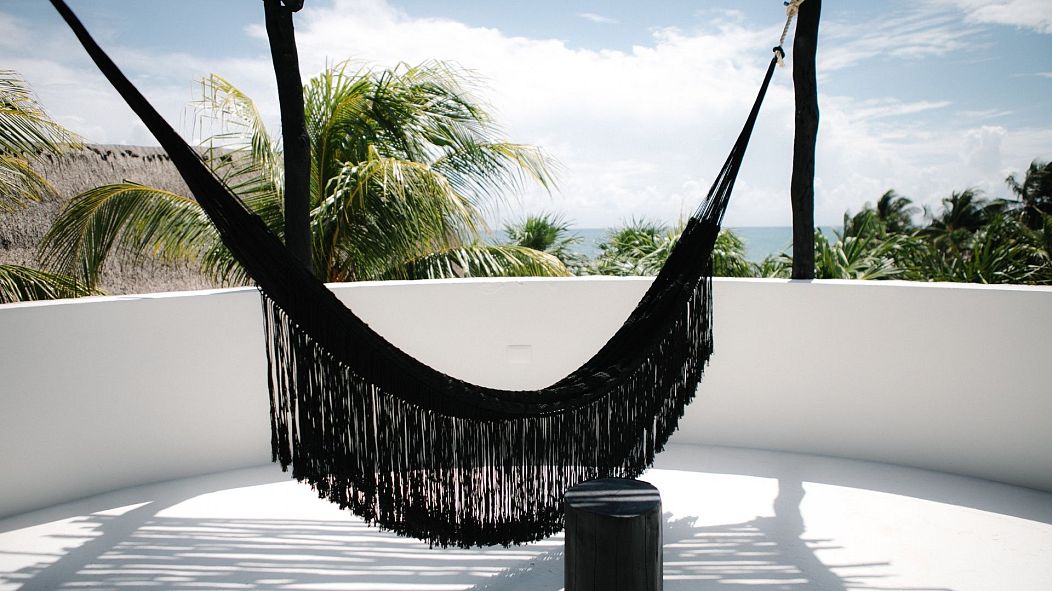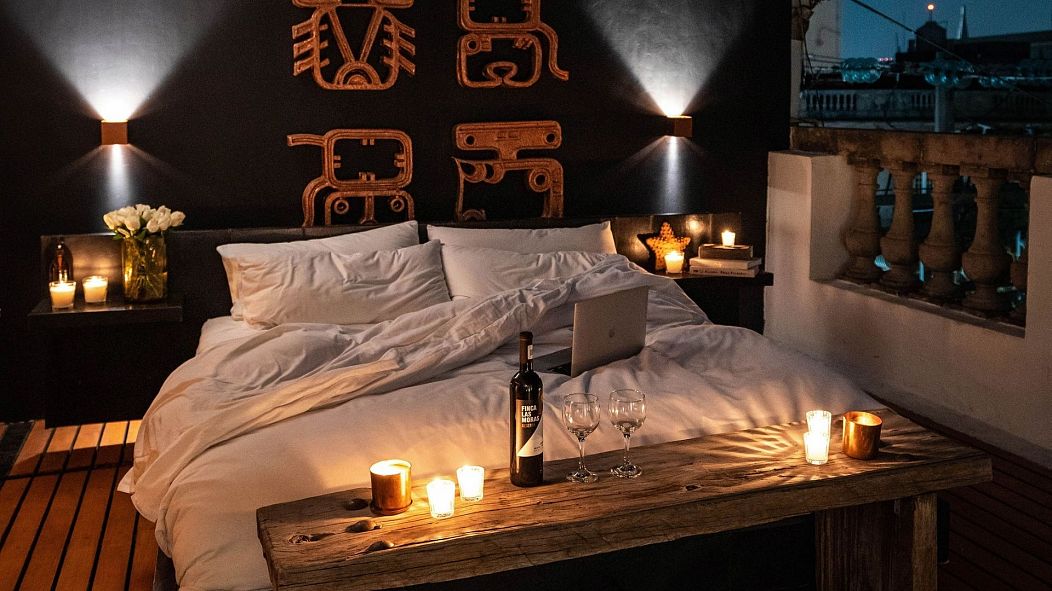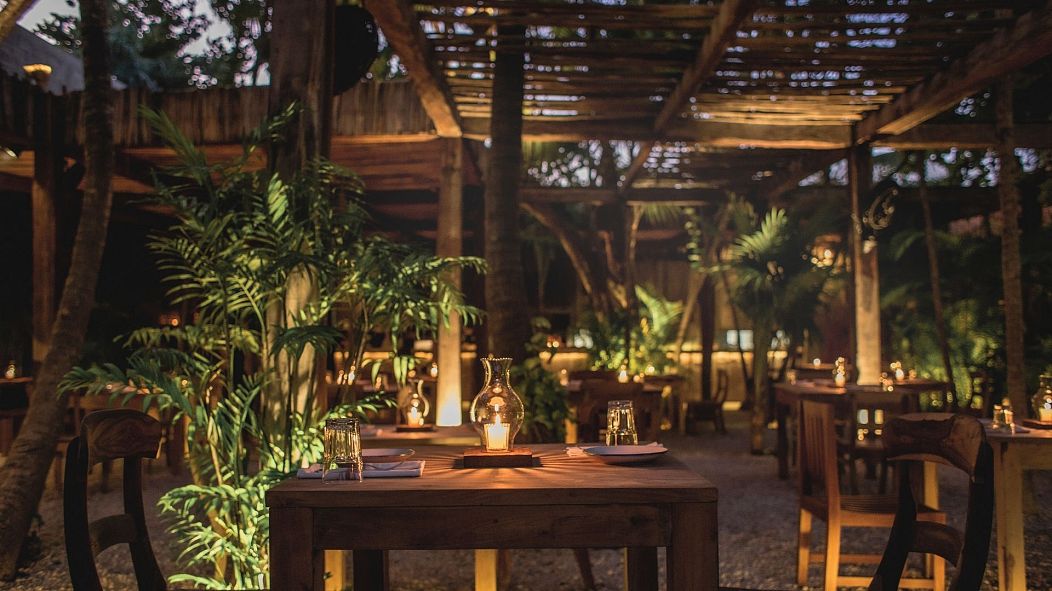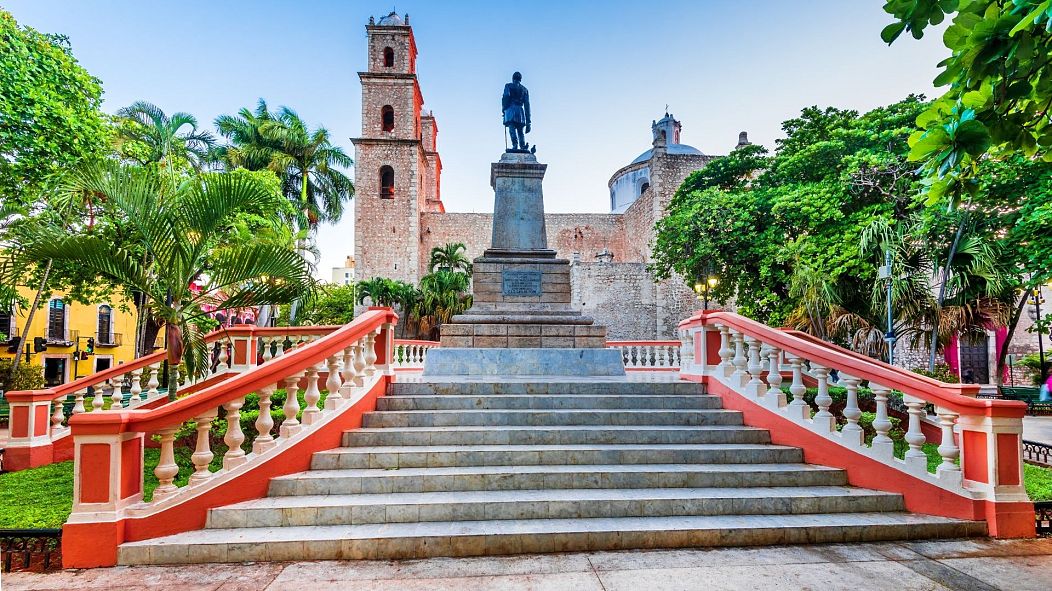From pastel-coloured shopfronts in Valladolid to the Aztec design of Tulum, this area is a dream destination for fans of architecture and design.
The great pyramid of Chichen Itza rises up from its forest clearing, reaching towards the Gods. You wonder what the Conquistadors must have felt when they first discovered it. Even for today's visitor the hairs on the back of the neck stand on end when you catch sight of this architecture from over a thousand years ago, the centre of a once sophisticated city complete with its own watering holes and observatory to chart the stars.
If it wasn't for the tacky gift sellers the spell would be enough to put you into a trance. As it is, the majesty of the place still entrances. And what it tells you about Mexico's history of incredible design feeds in to the present too (and we're not talking about the crappy knock-off models of the sacred pyramid which miraculously always cost “one dollar”).
In the nearby city of Valladolid, pastel-coloured shops and offices crowd a main square and the back streets are full of bodegas and mopeds. That classic slightly shabby townscape makes you think of so many South American cities, but here the colours of the buildings are perhaps richer.
After a road trip down to the coast I'm ready to take the plunge into the Caribbean Sea, its perfect turquoise waters envelop the swimmer. I jump in and feel the coolness washing my sins and worries away. Floating, it's almost enough to trick you into thinking there's no pandemic, no problems.
Sadly the beaches are not always what you’d hope for – plastics float onshore, save for that picked up by local beach cleanups. This reinforces what we're constantly aware of now, that the ecosystem is as fragile as the coconut husks that fragment between our fingers and turn to dust.
Along the fringes of the beach, between the coconut trees and the kitesurfing schools, the once hippie-esque town of Tulum has evolved into something different, with a proliferation of hotels catering to remote workers and those on vacation from the frozen north. There are even, despite COVID, some young party animals who are keen to dance to the DJs playing records on socially distanced beaches and at rather less safe jungle raves only spoken about in hushed tones (don't worry, I did not attend).
There are bars aplenty in Tulum if that's your thing and outposts of upmarket European brands like St Tropez's Bagatelle restaurant.
Of Tulum's restaurants, Nu is worth a visit – its pared back décor sits in unison with its culinary ethics. Serious, progressive Mexican dishes cooked with panache by a brigade who all got the same tattoo of the restaurant's name and mean business.
The beach buildings along Tulum's seafront are open so the wind can woosh through and cool the place, and everywhere there is rattan. There are roofs but seldom walls - funny because the Mayan stone buildings seemed so solid and enclosed, now we build flimsier but this helps to cool things naturally in the Caribbean heat.
The swaying palms seem to merge with the architecture somehow, like nature is trying to take back what it once owned before we came along with a load of ideas. This feeling is only heightened at night when you sit on your patio and watch the lizards dance across the concrete, then the cockroaches. And all the while mosquitoes buzz around you, reminding you who's boss.
Tulum's famous design hotels
The rich history of design in Yucatan has given Tulum a slew of hotels with styles that are individual but which often refer back to the Mayans and the Spanish colonists and everything in between.
The dream-catchers that are supposed to ward off evil spirits flutter in the buffeting winds from the balconies at Maria Del Mar. These cute circular motifs hang on many Mexican doors and indeed do here too. Cradled in a rocky bay, Maria Del Mar's coup de grace is a clifftop terrace with swings and seats and an Aztec barrel bath. The dramatic, rugged section of coast here excites. They also try to minimise laundry to protect the environment.
At their sister property Pocna, you feel offgrid without Wifi in an almost austere but very cute little bungalow. But the treat of being able to walk from your door down to the beach in five simple seconds is mesmerising. The generators and tanks and water preservation reminders ram home how precious all our resources are and how we need to preserve them. The walkways and the super staff bring the experience to life and there's Japanese food at Kogure.
Casa Malca is owned by New York art dealer Lio Malca and sits on the former estate of notorious narco baron Pablo Escobar. Today the site is awash with art – it's like staying in a gallery, with works by KAWS and Jean Michel Basquiat and many others. No wonder there are a few security guards around.
There's even a double level pool with a secret underground cavern and a famous piece of hedgerow known for its engagements – one happens while I'm swimming in the Malca pool.
Nest and La Valise are joint properties in Tulum's coolest design hotel portfolio. Nest offers whitewashed villas and dark wood and some of the best vegan bowl breakfasts in town. La Valise recently burnt down (careful with those ciggies) and the restored version has just a handful of rooms in a super luxe pitched roof spot complete with those weird elongated tiger seats that you can spy at Chichen Itza.
If you're bringing the brood, Zorba is the perfect place. Whole houses come with three or more bedrooms and twee touches like coloured glass bottles set into the plaster walls. The handsome hardwood counters and table make hosting here a special occasion.
La Zebra offers a dark, handsome vibe and sumptuous interiors along with colonial balconies that wouldn't be out of place at Raffles in Singapore, with rooms set among the sand of the beach. Just like its other half El Pez – where the rooms are also steps from the sand and feature maritime motifs and fishing interiors which celebrate the local fisherman who still land a catch (while above you, always, pelicans and gulls circle trying to catch their own lunch).
Cabanas Tulum have something unique – your own steps down to the pool for VIP access from each room, your own hot tub and a great little eatery onsite called Ziggy's with tons of vegan and veggie options.
In town there's the El Cielo – another hotel owned by an art dealer, with a bohemian mish mash of found furniture, and old paintings. The rooftop is cool already but they plan to put a bar and a pool up here. Downstairs at Emilia you can chow on some of the best chilaquiles in town.
And before you fly back from Cancun Airport, a night at Nizuc will round off a trip. It looks like it's owned by a James Bond baddie – two infinity pools, stark architecture, beautiful beaches, watersports and a pier you can dive off, plus fab restaurants like Ramona. Designer Alejandro Escudero worked in tandem with Mexico's prestigious National Museum of Anthropology to recreate Mayan designs and place them throughout the hotel and on its iconic logo.















